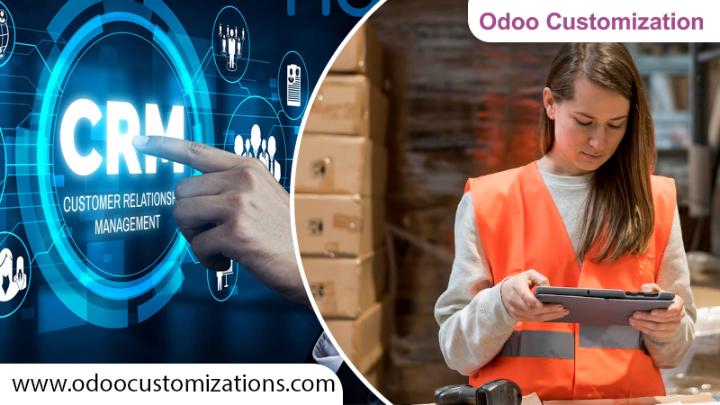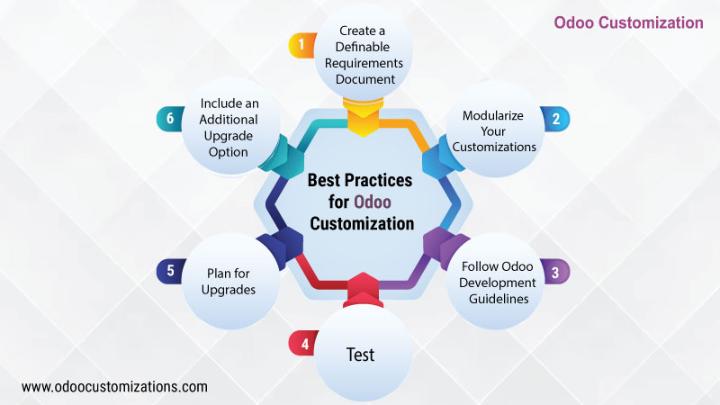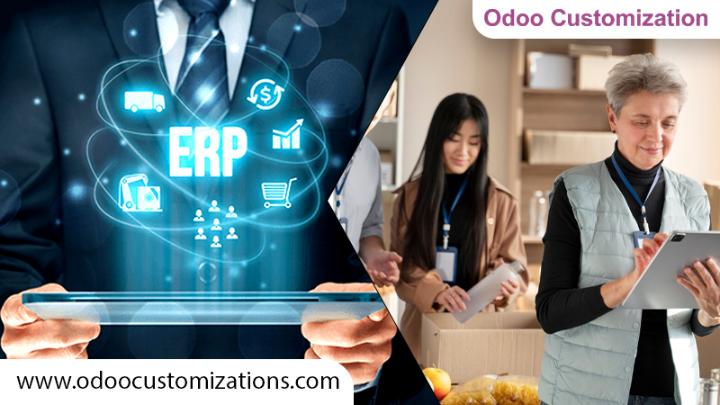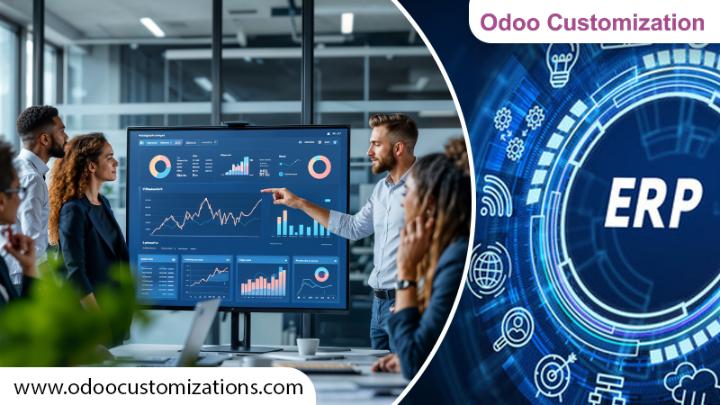Unleashing the Full Potential of Your Business: The Ultimate Guide to Odoo Customization
In the fast-paced digital world we live in today, businesses are continuously looking for revolutionary solutions to streamline processes, cut costs, and push ahead of competitors. Odoo is a powerful open-source ERP suite that has great flexibility, but the true magic and value of Odoo happens when you fully customize it to align with your specific workflows. In this article, we anticipate discussing the value of Odoo customization. We will offer some relevant examples and additional ideas, and also help you choose the right partner to enhance the possibilities of your Odoo customizations.

What is Odoo Customization?
Odoo offers hundreds of module applications (i.e., CRM, Inventory, Accounting, HR, Manufacturing, eCommerce, etc.) out-of-the-box. However, no business is the same, and therein lies the possibilities of Odoo customization:
Customize module workflows to your business's industry and processes
Create custom modules and fields
Integrate third-party apps or add-on external tools
Automate repetitive tasks or notifications
Improve User Interface (UI) or User Experience, guiding a better user experience and productivity
A good customization will ensure that Odoo does more than "fit" your company -- it becomes the engine for growth.
Why Customize Odoo?
1. Tailor Your Business Processes
Every organization carries out its business processes in its own way. When using an off-the-shelf solution, you will be required to shift your processes and change your operation. In the case of customization, the system is customized to fit you.
2. Improve Productivity and Efficiency
The smart custom workflows you are going to build into your system are going to automate your manual functions. By doing this, you allow your employees to spend time on strategic work instead of entering data manually.
3. Maintain your Competitive Edge
The custom system you develop is going to reduce turnaround on orders, manage your inventory better, and produce better forecasting accuracy, to name a few.
4. Scale your System with your Business
The customized Odoo solution you build can scale with you. As your business requires further demands, you will be able to add to the solution to sustain it and grow, not outgrow it.
5. Long-term ROI
Customized solutions may have a short-term cost associated with them, but the interim value you will receive is considerable. You won't have to modify your operational practices to work around the system anymore, which means enhanced accuracy and less reliance on other external tools.
Types of Odoo Customization
A. UI & UX Enhancements
- Redesign dashboards to include KPIs, graphs, and data visualization.
- Create views with dynamic, changeable filters, toggles, and layouts.
- Create configurable reports or PDF layouts to include branding and versioning by industry.
B. Business Logic & Workflow Enhancements
- Automate invoice generation to be sent on delivery confirmation.
- Add status triggers, i.e,. Automatic alerts on restock.
- Create validation triggers (i.e., quantity limits or legality).
C. New Module and Model
- Create industry-specific modules (i.e., health care patient logs, school-specific attendance).
- Define custom objects (i.e., customer contracts, equipment tracking, quality audits).
D. Third-party Integrations
- Sync with shipping carriers to show estimated rates and live tracking.
- Integrate with payment providers, e-commerce marketplaces, or logistics APIs.
- Connect to BI dashboards like Power BI or data warehouses to provide drill-down capabilities.
E. Security and Access Privileges
- Create permissions to specific modules or fields based on role.
- Restrict access to the data based on levels of user (i.e., branch level, function level).

Best Practices for Odoo Customization
1. Create a Definable Requirements Document
Define stakeholders/people, workflows, pain points, and goals. A well-defined blueprint will limit ambiguity and align the stakeholders.
2. Modularize Your Customizations
Take advantage of repeatable modules to separate custom code. This could help in the case where your organization needs to upgrade the Odoo version, since the changes/updates do not get injected immediately into the Odoo code base.
3. Follow Odoo Development Guidelines
Follow Odoo's API and ORM conventions. Clean and maintainable code is also easier to maintain (at least easier than unstructured code).
4. Test
Test each of the customizations via unit tests or QA. Test the weird flows and edge case scenarios, like volume of data and other oddities.
5. Plan for Upgrades
Customizations can break during an upgrade. Document your changes to the modules and version your modules so your organization can upgrade the modules with as little pain or disruption as possible. Deploy a version upgrade-friendly architecture.
6. Include an Additional Upgrade Option
Write comments, use a consistent naming convention, and document workflows so whoever picks up the project can jump in.
Real-World Use Cases
1. Manufacturer with Complex Bill of Materials (BOM)
A manufacturer developed a unique BOM management module that was able to automatically modify orders, raw material forecasts, and capacity according to information from the shop floor in real time. This reduced procurement delays by 35%.
2. Retailer with Multiple Locations
A retailer managing inventory across ten retail locations required a custom dashboard to see stock levels, transfers between warehouses, and automated reorder rules across a complex multi-location environment in real time. Within six months, they saw stock-outs improve by 50%, which were fixed.
3. Professional Services Organization
An agency developed a unique module for client onboarding, project budgets, and time logging with custom approval workflows. The agency achieved a 25% improvement in lead-to-bill cycle time and greatly reduced billing disputes.
Choosing the Right Odoo Customization Partner
The customization journey is based on the selection of a suitable Odoo consultant. The following is a list of factors to consider and why that factor is significant:
Odoo Certified Developers
Certification provides evidence of depth of knowledge and understanding of the architecture.
Relevance of Industry Experience
They can anticipate and identify issues that may be unique to a business, specifically to that industry.
Communication
Very important for identifying the right requirements and keeping you informed on development cycles and deliverables.
Support & Maintenance
Always ask about Support SLAs, bug fixes, and version upgrades.
Pricing
Ask for fixed bids or hourly estimates with a clearly defined scope.

Why OdooCustomizations.com is Your Go-To Partner
At OdooCustomizations.com, we are focused entirely on customized Odoo solutions that drive real change in your organization. What do we mean by that?
We have:
- We have deep experience with Python, Odo, and ERP workflows.
- A successful delivery record across all industries: Manufacturing, Retail, Services, Education, Healthcare, etc.
- A strong ROI perspective. We link customizations explicitly to results: cost savings, speed, and revenue increase.
- Long-term support. After deployment, we tune and upgrade your system to keep it as fresh and valuable as possible for your team.
Through our proven 3-phase process, we can guarantee seamless custom development across analysis, development, and deployment to a faster go-live and fast wins along the way.
Common Failures
- Over-engineering: Not every process needs to be automated. Focus on the biggest impact areas.
- Not educating users: Customized systems better provide UX with education, as well as documentation.
- Not cleansing data: Automations require clean data. Build validation rules and checks on data before customizations occur.
- Not communicating change: Connect with stakeholders, get feedback, and iterate.
How to Get Started With Odoo Customization
Let's engage a business model and goal planning specialist.
Tailor your offer
We can offer modular options so you can choose the things that are relevant today and build on them over time.
Go-live in phases
Deliver the high-value changes first, gather feedback, and refine the less-scoped features.
Go-live support
We will make our traditional SLA-based bugs, upgrades, and improvements available to accelerate the project.

Final thoughts
Odoo customization is not fluff; it is necessary. You are not customizing your ERP just so it looks pretty; you are customizing it so it looks like the way you work and incorporates efficiencies, smarter decisions, and ultimately scalability. Whether you are customizing a module or producing full automation for the enterprise, the onboarding experience with the right partner has never been more important.
If you are ready to start expanding your Odoo experience, the experts at OdooCustomizations.com are ready to help you begin your customization journey. Let's develop solutions that work like you work.
Need a full-service digital transformation provider? Get a feel for the innovative services of O2B Technologies, your trusted technology partner that offers remarkable technology services such as web and mobile apps, cloud infrastructure, data analytics, and much more. See how O2B can supercharge your ability to do business!
Custom solutions are the way to take your business to the next level. Enjoy customizing!
Frequently Asked Questions
1. How long does it take to customize?
Timescales will depend on the depth of the project. A small modification will take a few days, whereas a full-modular development based on highly complex integrations will take 4-12 weeks. When good alignment on the project scope is produced with a rolling-out phased process in mind, it all goes faster.
2. If I customize, will my upgrades not apply again?
Provided they sit on separate modules & true clean code patterns, upgrades will be applied without issue, and merge conflicts are considered up-front for SemantiK in variant upgrades.
3. Is it cheap to customize?
Absolutely! There are implementation costs; however, common drivers for Return on Investment are: less time staff are using, a lower incidence of errors, and improved processes. Many of our clients break even in as little as 6-12 months.
4. How will I be able to sustain my custom system long-term?
We do offer clear ongoing support and maintenance plans, which include code reviews, backups, and version migrations, so that you and your company are using a safe and dependable platform.
5. Can I customize just one component of Odoo (i.e., sales)?
You can customize sales without having to customize or implement any other portions of Odoo. Our modular approach is built on the premise that one can start small (i.e., customized sales quote layout) and build up from there on other areas, if desired.